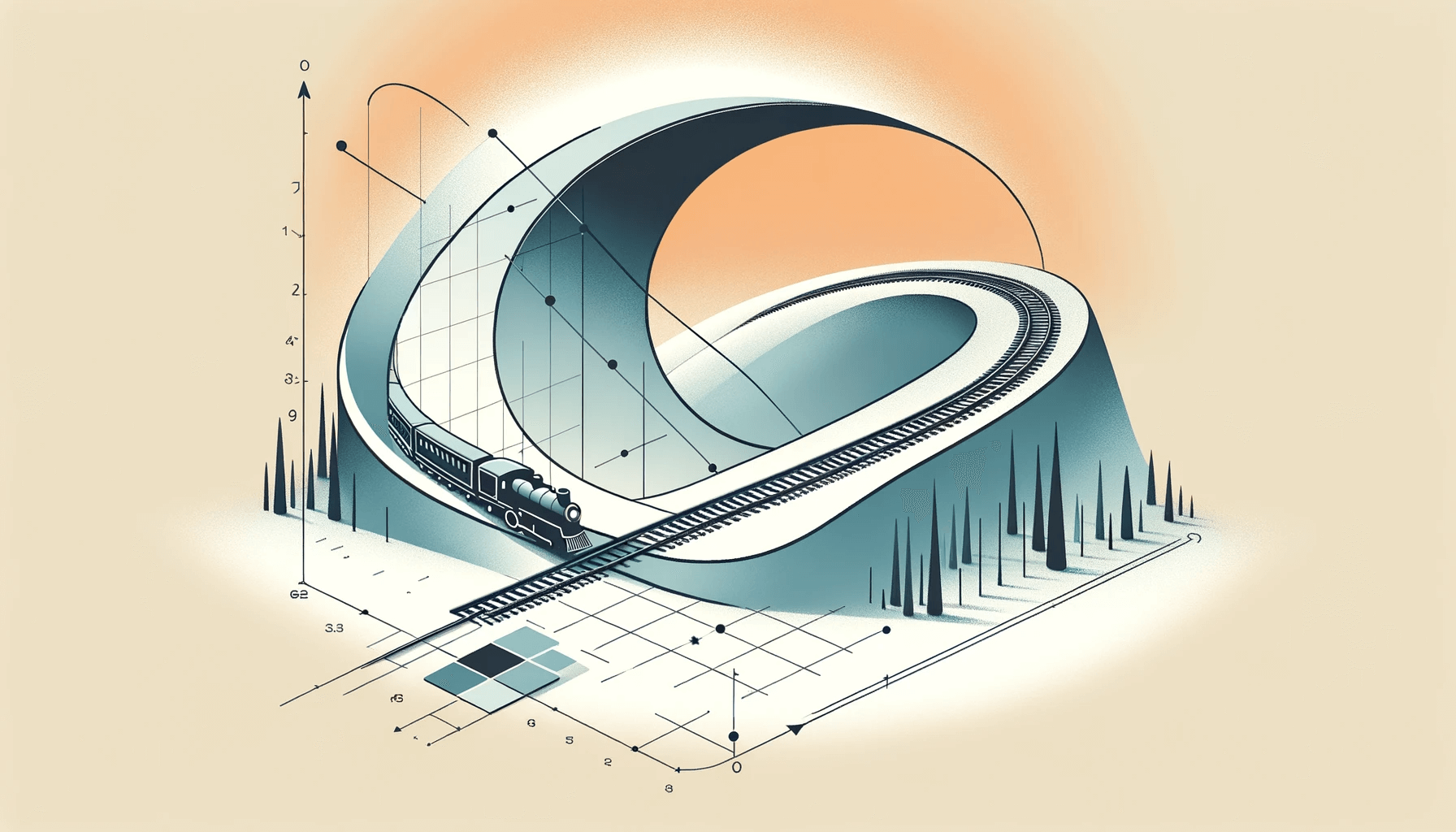Railroad curve calculators are essential tools for engineers, surveyors, and planners to design and analyze the geometry of railway curves. Curves are critical to railway design, as railroads rarely follow a perfectly straight path. Proper curve design ensures the safe and efficient operation of trains, whether navigating hills, valleys, or urban areas. This detailed guide covers the fundamental principles of railroad curves, the purpose and use of railroad curve calculators, and the calculations involved.
- Understanding Railroad Curves
Railroad curves come in various types, primarily classified into horizontal and vertical curves:
- Horizontal Curves occur when the track deviates from a straight line on a flat plane. It could be a simple curve (part of a circle) or a compound curve (a combination of two or more circular arcs with different radii).
- Vertical Curves: These curves are designed to transition between different slopes or grades of a railway. Vertical curves create smooth transitions between inclines and declines, ensuring comfort and safety.
Both curve types play significant roles in ensuring the track’s stability, minimizing the wear and tear on rolling stock, and optimizing fuel efficiency.
2. Critical Parameters in Railroad Curves
Before diving into the railroad curve calculator, it is essential to understand the parameters involved:
- Radius (R): The distance from the center of the curve to the track. A smaller radius produces a sharper curve, possibly requiring slower train speeds.
- Degree of Curve (D): The angle subtended by a 100-foot arc on the curve. It is inversely proportional to the radius (i.e., the larger the degree, the smaller the radius).
- Superelevation (E): Also called cant, superelevation is the difference in height between the outer and inner rails on a curve. Superelevation helps trains navigate curves safely by counteracting centrifugal forces.
- Chord (C): A straight line connecting two points on a curve, used in calculating deflections and other geometric properties.
- Length of Curve (L): The distance along the curve between two points, often measured along the centerline of the track.
- Tangents (T): Straight sections of the track that meet the curve. The tangent length is the distance from the Point of Curve (PC) to the Point of Tangency (PT), which are a curve’s start and end points, respectively.
- Deflection Angle (Δ): The angle formed by two tangents at the Point of Intersection (PI). It is an essential factor in determining the degree of the curve.
3. Purpose of Railroad Curve Calculators
Railroad curve calculators are designed to assist in determining the various dimensions and characteristics of a railroad curve, simplifying what would otherwise be complex trigonometric and geometric calculations. These calculators are typically used for the following purposes:
- Curve Layout Design: Calculators help create a layout for horizontal and vertical curves that fit within the terrain while maintaining safety and efficiency standards.
- Safe Speed Determination: Calculators can determine the maximum safe speed for a train on a specific curve based on the radius, superelevation, and degree of the curve.
- Transition Curve Calculation: Transition curves (easement or spiral curves) gradually transition from straight to curved sections. A railroad curve calculator helps compute the transition length, ensuring smooth entry and exit from curves.
- Track Maintenance: Engineers use curve calculators to assess track wear, adjust superelevation, and verify that curves meet safety regulations.
Railroad Curve Design Considerations
Several key factors influence railroad curve design:
- Train Speed: Higher train speeds require larger radii and gentler curves to reduce the impact of centrifugal forces. Additionally, more superelevation is necessary for faster trains.
- Terrain: The land’s natural topography can significantly affect the type and size of the curve. Designers must strike a balance between ideal curve parameters and the practicalities of the landscape.
- Safety Standards: National and international railway standards dictate the maximum allowable degree of curve, superelevation, and transition length. These regulations are vital for ensuring the safety of the railway system.
- Track Wear and Maintenance: Sharp curves increase the wear and tear on tracks and wheels. Properly designed curves help reduce maintenance costs and extend the lifespan of the track infrastructure.
- Types of Railroad Curve Calculators
There are several types of railroad curve calculators available, including:
- Online Curve Calculators: These web-based tools allow users to input variables like radius, degree of curve, and superelevation to compute the required outputs.
- Dedicated Software: Advanced software such as Civil 3D, Bentley Rail Track, and others provide robust curve design tools with integrated 3D modeling and analysis capabilities.
- Mobile Apps: Many railroad curve calculators are available as smartphone apps, offering engineers and surveyors on-site calculation capabilities.
Conclusion
Railroad curve calculators play a crucial role in designing, analyzing, and maintaining railway systems. Using these tools, engineers can optimize track geometry, ensuring safety, efficiency, and reduced wear on trains and infrastructure. Understanding the basic parameters, formulas, and considerations involved in curve design is essential for anyone working in railroad engineering or surveying. Proper curve design not only improves the overall performance of the railway system but also contributes to a smoother and safer journey for passengers and cargo alike.
Railroad Curve formula
The variables used in the formula are:
D = Railroad Degree of Curve
R = Radius in foot


